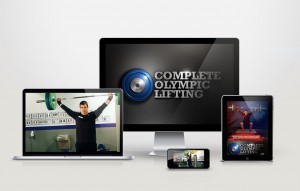7 Strategies For Success As A Strength & Conditioning Professional
Owning a strength & conditioning business is a different animal than owning a typical personal training business and it’s drastically different than being employed as a Strength Coach by a school or sports organization. Here are 7 strategies that will help you enjoy success as a strength & conditioning business owner.
1. Be Great At Your Craft
I know, it seems obvious. But unfortunately too many people that talk about business and marketing forget that the foundation of a great training business is great training. Consistently making your athletes better and being a solution that parents and coaches can count on will make every marketing or business growth tactic you apply far more effective.
2. Find A Marketing Approach That Fits
One of the reasons that coaches shy away from market is that they try to fit a square peg in a round hole. They think that marketing means doing expensive advertisements, writing slick sales copy or something else that they’re either uncomfortable with or unskilled in.
Your best path to marketing success is finding an approach that fits your personality. If you’re a people person, spend the bulk of your marketing time networking with coaches, parents and administrators. If you enjoy social media, make utilizing it a consistent and systematic way to spread the word about your business. And most importantly, spend time generating referrals from your own athletes through giving them opportunities to bring friends and share what you do, by celebrating their successes and by making them ambassadors for your business.
3. Choose A Sport And Own It
This is the quickest way that I know to gain traction in a market. While you ultimately probably don’t want to put your eggs in just one basket, by trying to become the go to solution for one sport allows you to focus your marketing efforts on one specific segment of the population. If it’s baseball, then you are targeting high school and travel team coaches, baseball players and their parents, baseball leagues and local vendors who supply baseball teams and players.
By taking this focused approach you can more quickly and easily build relationships, become more likely to be seen as an expert and specialist and become far more efficient with your time and resources.
And once you’ve captured one market you now have the connections and credibility that will make it easier to go after the next one.
4. Recognize High School Boys Aren’t The Only Market
 Because the majority of the coaches working with athletes are male and high school aged athletes are often the ones they most easily identify with, it’s natural for them to default to trying to target that group as their potential clients.
Because the majority of the coaches working with athletes are male and high school aged athletes are often the ones they most easily identify with, it’s natural for them to default to trying to target that group as their potential clients.
Unfortunately, this is also the most challenging market to get traction with for a number of reasons ranging from their now seemingly years around specialized sports schedule to schools and organizations often taking their strength & conditioning in house.
My suggestion is to not limit yourself to exclusively going after this population.
Middle school athletes and their parents are more focused than ever before on investing in coaching to improve their performance and their schools and organizations are less likely to provide in house programming. Plus, while this age group is still largely overscheduled, their schedules are more flexible than high school athletes.
The other market that is ripe with opportunity is the female athlete market. With each passing year the participation in women’s athletics increases and those athletes, as well as their parents and coaches, are aggressively seeking to optimize performance and gain a competitive edge. But while the market is large, the competition among coaches targeting it is still relatively weak. That won’t last, so capitalize on it now.
5. Be More Than A Workout
Getting your athletes faster and stronger is important, but it’s just a piece of what you should be doing. College football coaches routinely refer to their strength & conditioning coaches as the most valuable coach on their staff, and with good reason. You can and should be connecting with your athletes year round, motivating, inspiring, mentoring and helping them develop into successful adults.
If you want them to become ambassadors for your business you need to spend as much or more time on this piece of what you do as you spend with programming.
6. Run Your Business As A Business
I routinely hear coaches say that they ‘don’t like business’ or that ‘they don’t get it.’ And these are the same guys who will read book after book on program design or go to one seminar after the next.
While I understand that business is new for many coaches, that’s doesn’t give them an excuse to stay ‘bad at business.’ Learn. Study. Improve. Because if you don’t, it doesn’t matter how good of a coach you are, your business will struggle at best and fail at worst.
7. Improve Every Day
This is almost a recap of the previous 6 tips. If you want to be a great coach and stay ahead of the crowd you have to keep learning. If you want to position yourself as the premier coach in your area, that requires daily improvement. If you want to ‘learn business’, it will simply take you committing to do it.
The enemy of greatness is complacency so find ways to improve as a coach and as a business owner daily and you’ll be well on the path to success.
There are 7 strategies that will help you not only deliver great coaching to your athletes, but also build a successful business doing it.
**To discover how Pat Rigsby can help you start, grow and sustain your own strength & conditioning business, check his site out here >>
Recommended Athletes' Acceleration
Products
—————————————————————————–






0 Comments for “7 Strategies For Success As A Strength & Conditioning Professional”